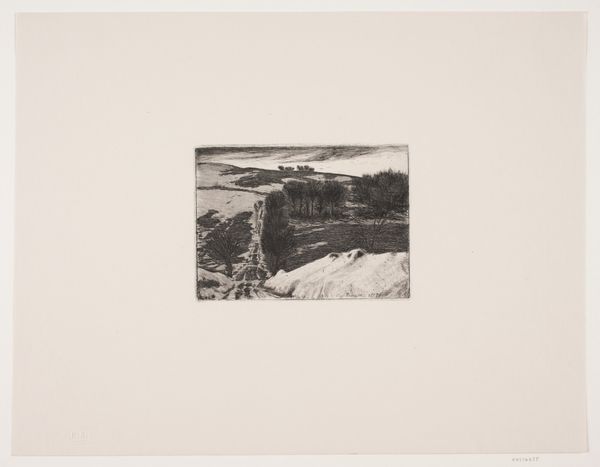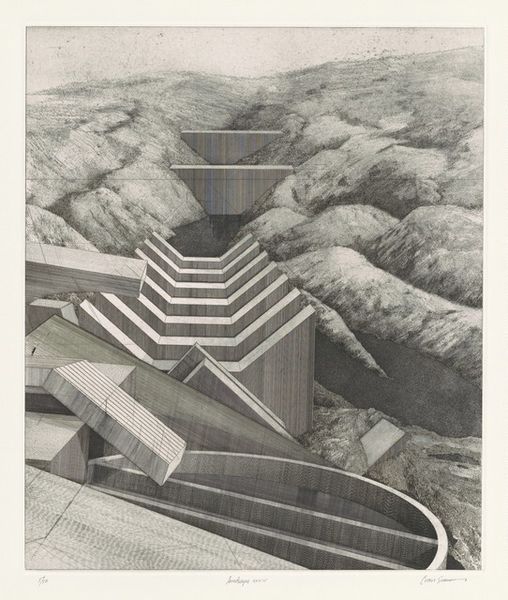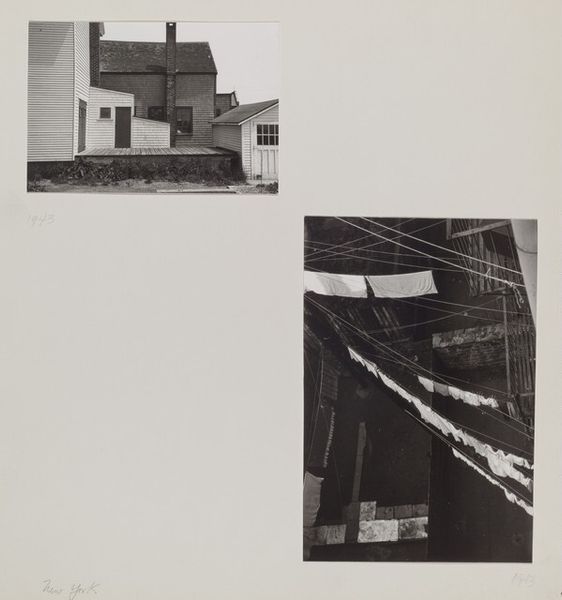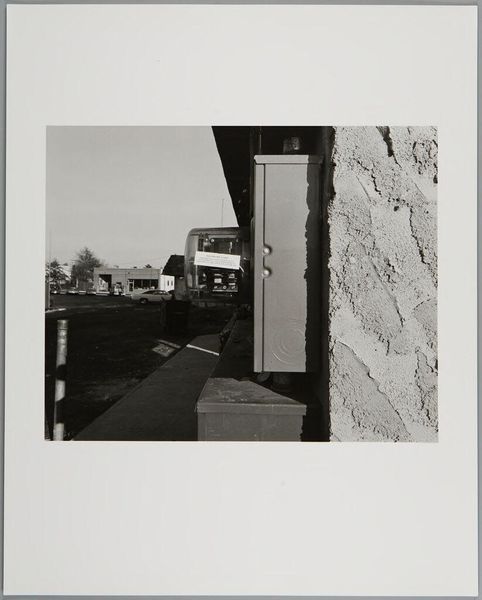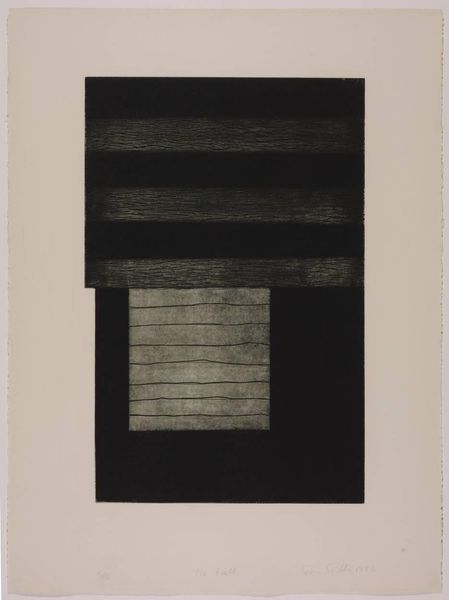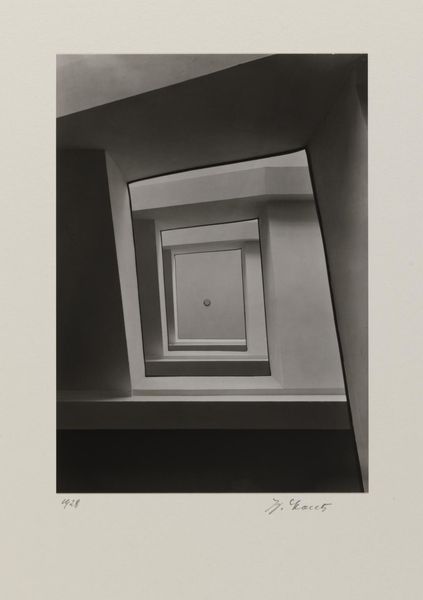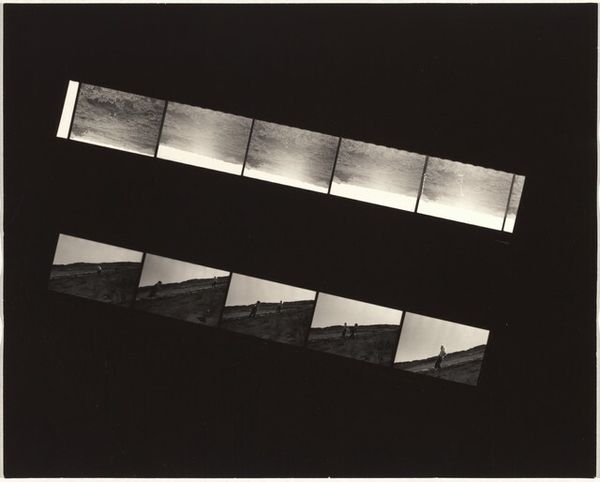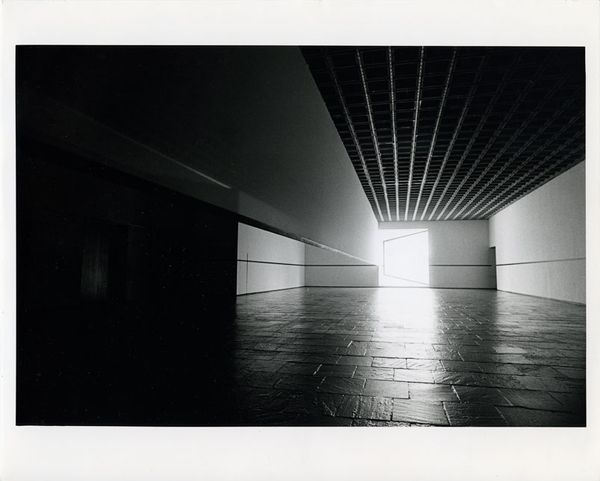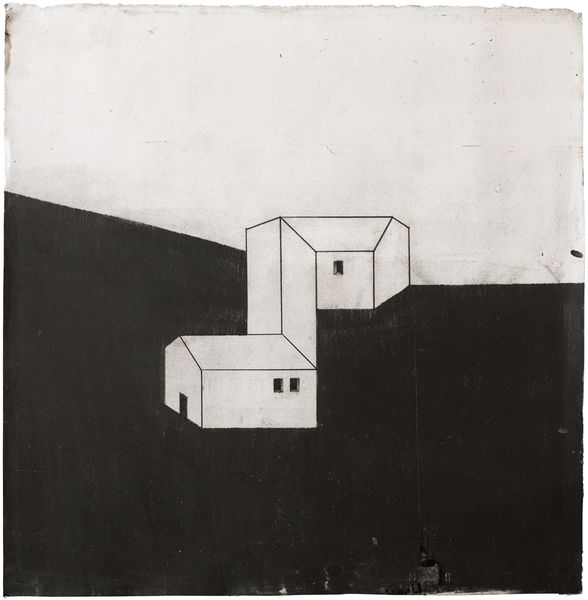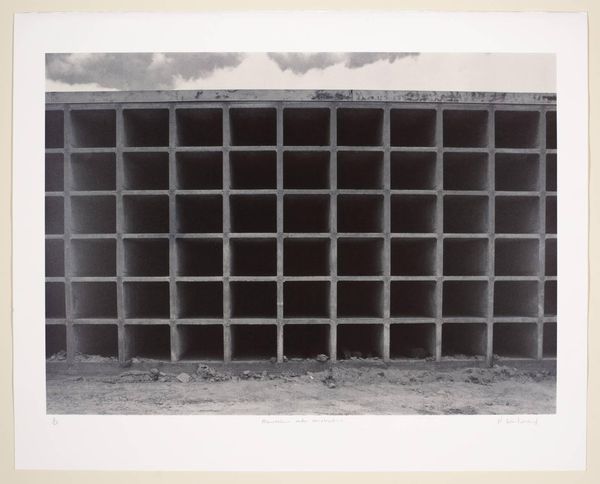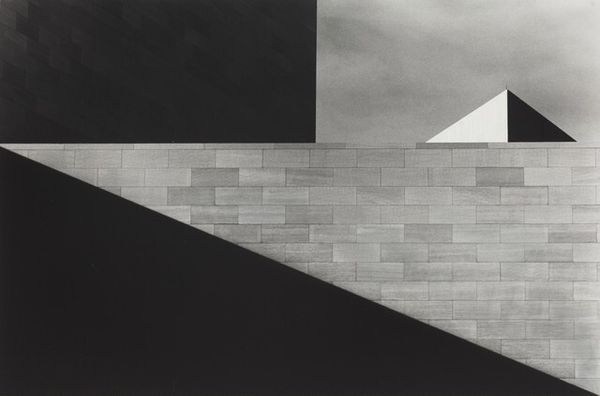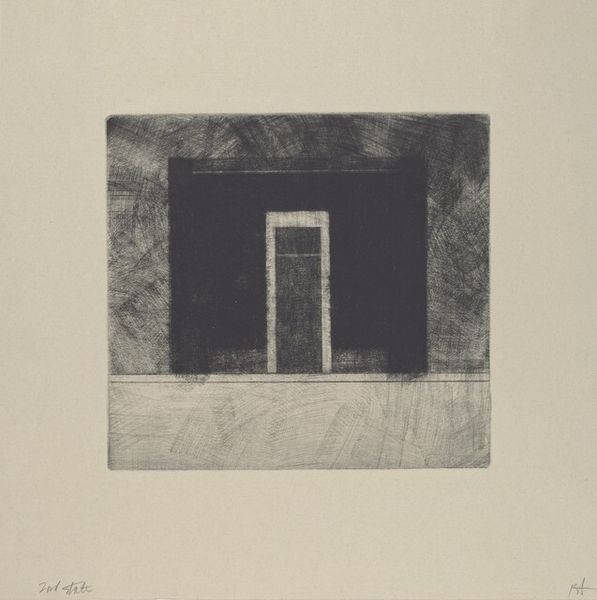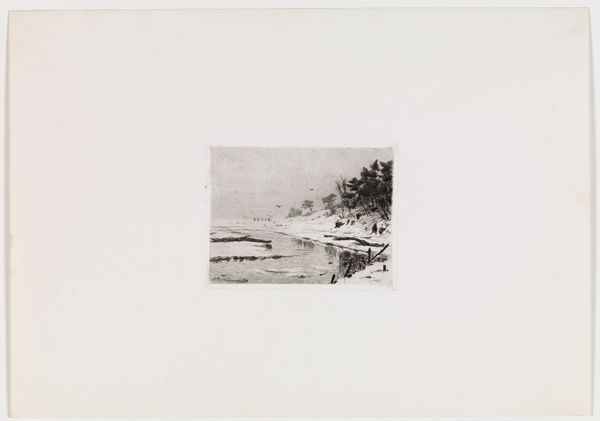
Dimensions: image: 165 x 224 mm
Copyright: CC-BY-NC-ND 4.0 DEED, Photo: Tate
Curator: This is Werner Mantz’s "Bridge, Cologne 1927," a photograph now residing in the Tate Collections. What strikes you first? Editor: An undeniable sense of foreboding. The stark, almost brutalist architecture frames that receding road, hinting at a journey, perhaps even an escape. Curator: Mantz, working in the New Objectivity style, focuses on the materiality. Note the concrete, its texture, and the labor involved in its construction. It’s about the infrastructure of modern life. Editor: Yes, but the bridge itself becomes a portal, a symbolic gateway. It evokes ideas of transition, the space between known and unknown, the psychological weight of progress. Curator: The social context here is key. Post-war Germany, rebuilding, industrializing. This bridge represents that ambition, that drive towards a new future. Editor: And yet, there’s a coldness. A lack of human presence makes the bridge feel more like a barrier than a connector. Symbols can be so contradictory, can’t they? Curator: Absolutely. It’s in that tension that the work finds its power. Editor: Indeed. It makes you consider the cost of that progress.
Comments
tate 8 months ago
⋮
http://www.tate.org.uk/art/artworks/mantz-bridge-cologne-1927-p79940
Join the conversation
Join millions of artists and users on Artera today and experience the ultimate creative platform.
tate 8 months ago
⋮
Bridge, Cologne 1927, printed 1977 depicts a partially constructed bridge straddling a countryside road that sits at the bottom of a shallow valley of earth. The thick stone walls of the bridge parallel the picture plane, emphasising its flat, austere features. Mantz framed the photograph so that the road recedes vertically through the centre of the picture, under the bridge and into the distance. The top of the bridge, which is perfectly flat, cuts across the horizontal axis of the image at the centre of the composition with the effect of separating the earth and road below and the cloudy sky above. The dark shadow underneath the bridge forms a perfect square that opens onto the distant landscape and frames it, functioning as a zoom to enhance the sense of perspective. Similarly, the diagonal shadow that obscures the embankment on the left adds to the play of tones and geometry in the picture. The physical solidity of the bridge and the symmetry of the composition help to balance the image, while the clouds in the sky suggest a movement that contrasts with the steadiness of the ground and the straight outlines of the man-made structure.
